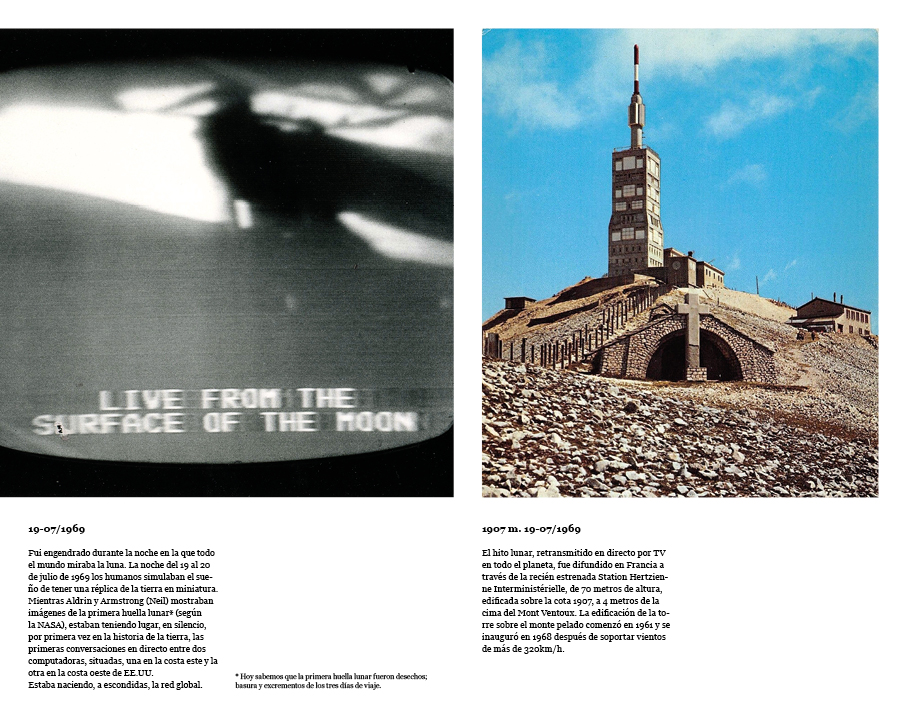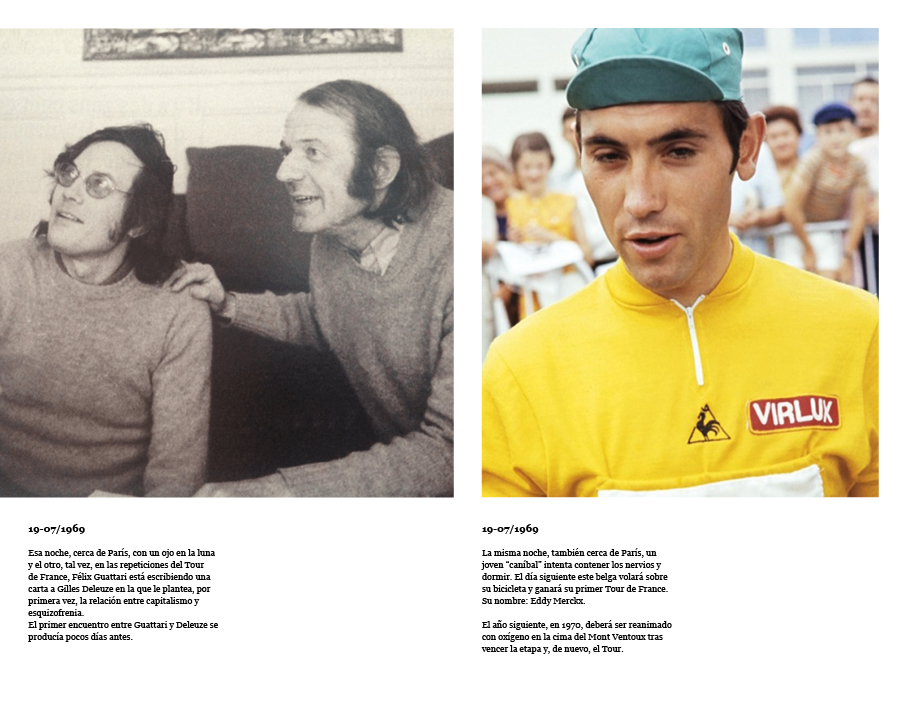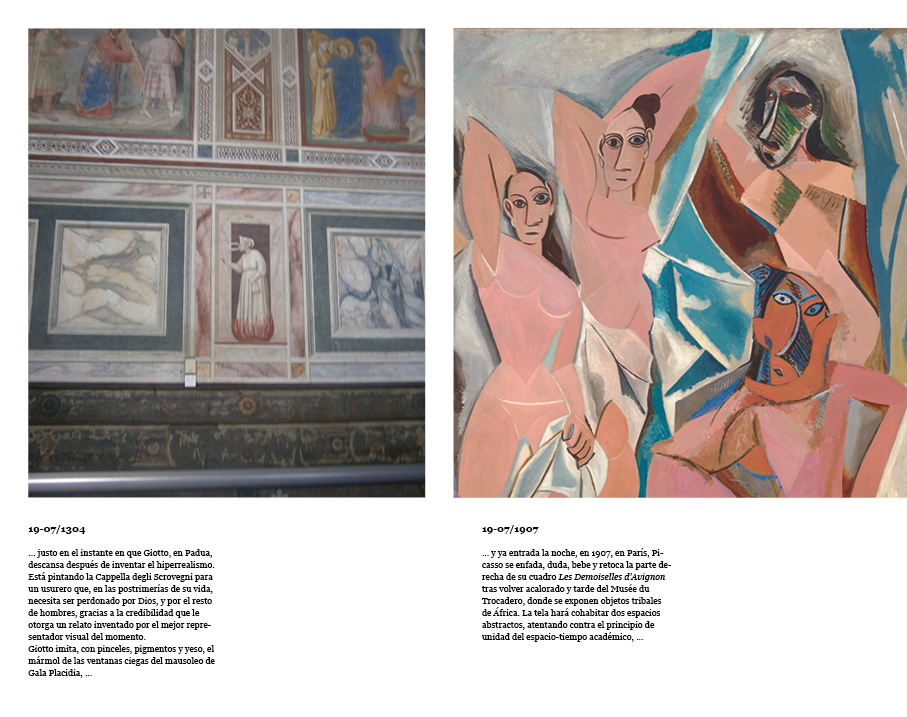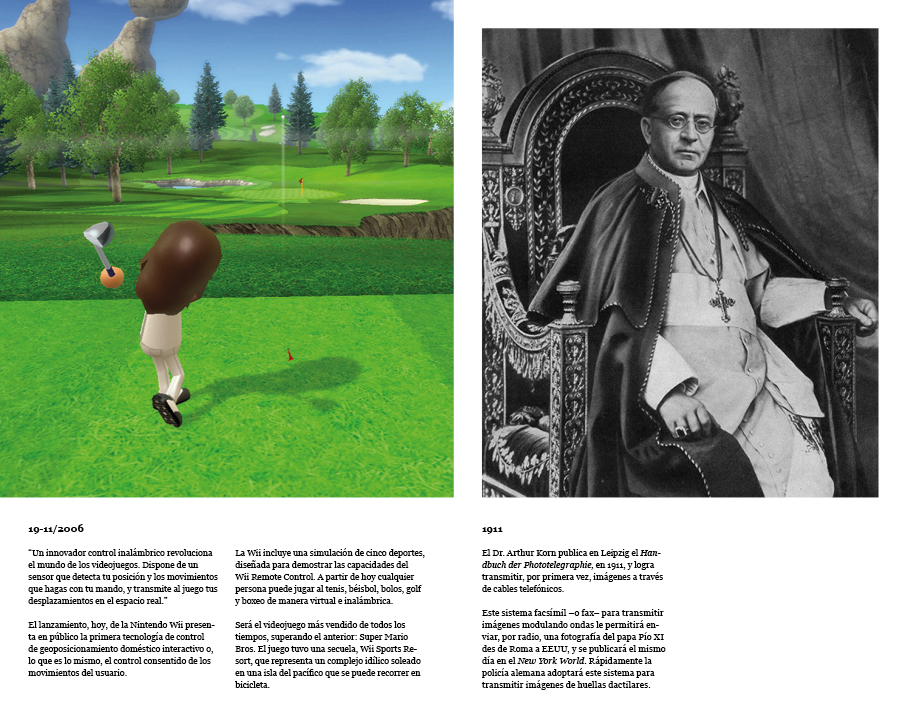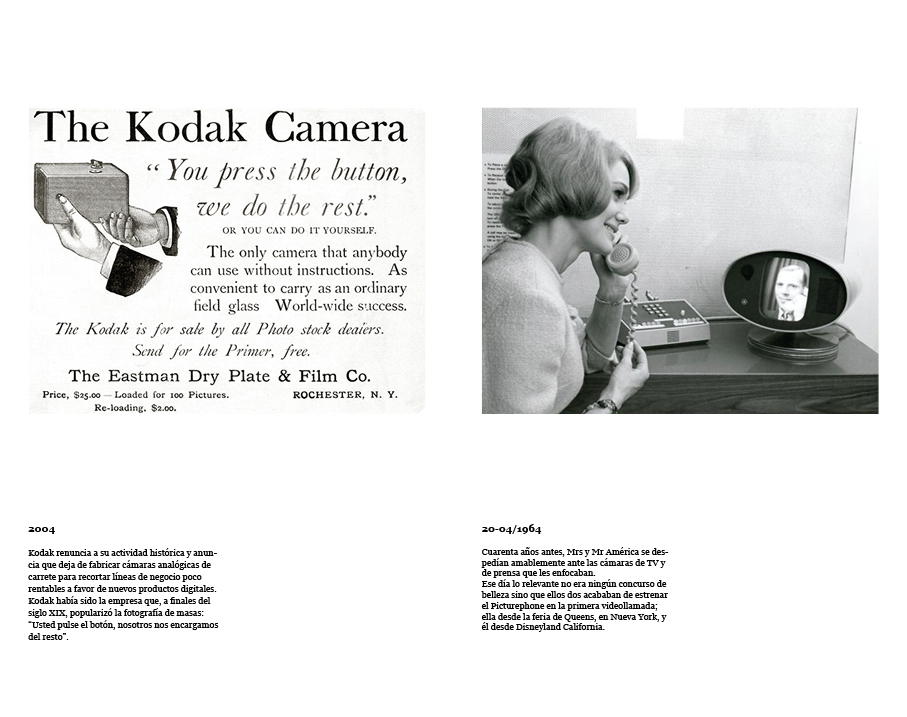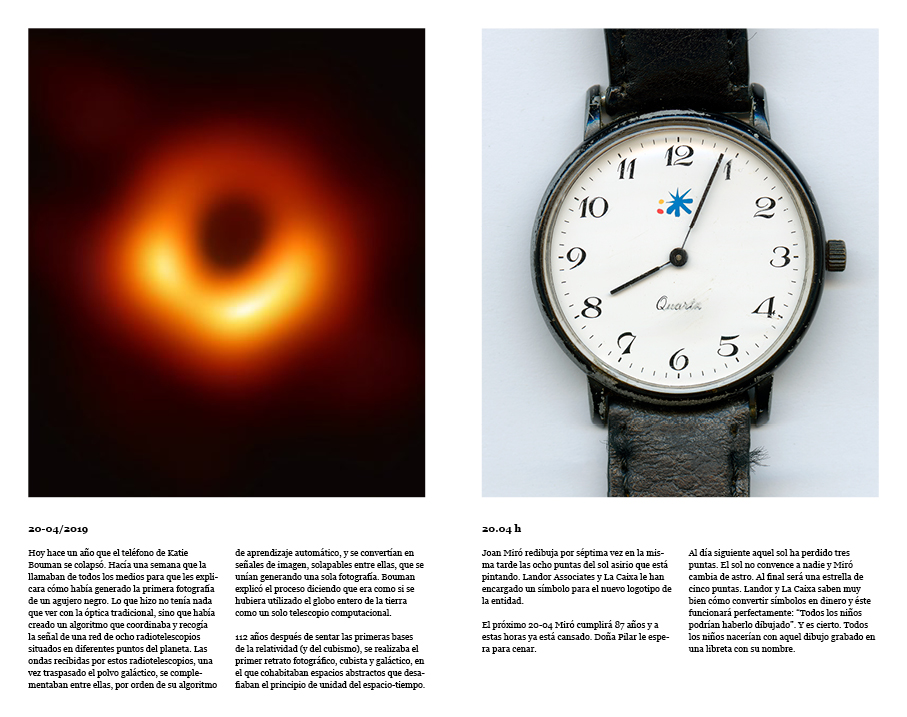Ignasi López, photographer, editor, designer
La Fuga. breve atlas de analogías, self-published, 2019-2020
La Fuga is a 60 pages book in 3 issues of 20 pages, with a private edition sent to 50 people in 3 deliveries (on 07/19, 11/19/2019 and 04/20/2020)
On which fields of knowledge are you focused?
Art, Science, Sports culture, History of Religions, Landscape, Geography, Philosophy, Ecology, Found Pictures…
What is the object of your research?
My recent work is based on a free play between my various fields of interest. I started from personal mythologies and autobiographical facts that generated them, to later connect them with contextual and sociohistorical aspects that have built them or could have done so. By deconstructing and playing with these facts, hypotheses, data and images related to the same fields of interest, we can reach other combinatorial stories, and mythologies alternative to reality. Specifically, this series of stories, interconnections, dates and places, like the book I propose here, has been an entertainment and a free essay of elements and autobiographical interests. It is a set of images and captions that I have wanted to make, coinciding with the 50 years that I have been living on the sphere that we share. La Fuga is a non-linear sticker album. A free way of telling a collective autobiography, which tomorrow may be another, from another point of view, told in a non-linear way, with other elements. All elements, images and background information have been drawn from various sources, freely remixed and reissued again. To carry out this exercise in infophagy and visual expropriation, I consulted digital or paper editions of the newspapers 20 Minutos, Adelante, ARA, Corriere della Sera, eldiario.es, El Mundo, elnacional.cat, El País, El Punt Avui, Heraldo de Aragón, La Gazzetta dello Sport, La Stampa, La Vanguardia, Le Figaro, Le Monde, New York Times, The Times. I made queries and screenshots, from various personal blogs, scientific and opinion portals, digital magazines or in its version of digital newspaper library, Aby Warburg’s Atlas Mnemosyne revisited by Didi-Huberman, old junk and postcard markets, Helena Tatay’s contemporary cartographies … and a lot of radio, a lot of Google, a lot of Wikipedia, a lot of Wiquimedia, a lot of summer naps with a pencil (or digital notebook) next to them, and a general confinement I have taken advantage of to finish this issue.
Could you identify some constants in your work?
The creation of new mythologies, the use of personal memories, the passion for personal and self-constructed landscapes, cycling and its history, science and its history, and the geographies in which all those items take place.
How did you find out about Aby Warburg’s work?
I learned about Aby Warburg’s work from the revisiting work by Georges Didi-Huberman, which was converted to an exhibition format in the ATLAS collective, at the Reina Sofía Museum of Art in Madid. I am interested in Warburg’s invitation to simultaneity, the non-linearity of the facts, and the use of any image and any document in pieces to tell valid stories. That the plausibility of free interpretations is not reality, but this does not take away its validity. Which is the warning point? as always, that an excess of authority from which this story is exercised turns stories into truths (and fake news).
How would you define an Atlas?
To me an atlas is a sequence of analogies between semantic fields, text and its image and vice versa. A sticker album is an Atlas.
Atlas as a conceptual, formal and mnemonic device; do you use it in your work?
Yes, in certain works I use the Atlas format. La Fuga is a non-linear sticker album. A flight to a free way of telling a collective autobiography, which tomorrow may be another, from another point of view, told in a non-linear way, with other elements.
Are there visual and emotional formulas (pathosformeln) in your project?
Yes, I can say that the entire Fugue is a cluster of pathosformeln.
In your work, do you identify formal or conceptual recurrences such as repetitions and disruption, distance and proximity, identity and migration, conflict and colonization?
Yes, I play with the cancellation of the distance between dates in order to present a continuous present of meanings. This generated present, and the chance of coincidences between equal dates, between numbers, heights, … serves to propose apparently non-logical relationships between images or data that are widely separated in time. This relationship between images can be by irony, by contrast, by coincidence of meaning, etc.
In your work, what is the balance between image and text?
La Fuga has a 50% – 50% relationship between the two.
Thinking about Warburg’s ‘good neighborhood rule’, what are the books that underpin your project?
BELLOSI, Luciano. La oveja de Giotto. Torrejón de Ardoz: Akal, 1992.
BESSE, Jean-Marc. La sombra de las cosas. Sobre paisaje y geografía. Madrid: Biblioteca nueva, 2009.
CALVINO, Italo. Il barone rampante. Torino: Einaudi Editore, 1987.
FARINELLI, Franco. La invenció de la Terra. Barcelona: Soc. Catalana de Geografia-IEC, 2016.
IZAGIRRE, Ander. Plomo en los bolsillos: Malandanzas, fanfarronadas, traiciones, alegrías, hazañas y sorpresas del Tour de Francia. Madrid: Libros del KO, 2012 .
LESSA, Priscilla. Se necesitan héroes. La estética del dolor. Valencia: La Caja Books, 2018.
NIXEY, Catherine. La edad de la penumbra. Cómo el cristianismo destruyó el mundo clásico. Barcelona: Taurus, 2018.
PAGLEN, Trevor. The Last Pictures. Oakland: University of California Press, 2012.
PANOFSKY, Erwin. Renacimiento y renacimientos en el arte occidental. Madrid: Alianza, 2014.
PETRARCA, Francesco. La ascensión al Mont Ventoux. 26 de abril de 1336. Gasteiz: Apuntes de Estética ARTIUM, 2002.
Are there more topics of interest that we haven’t pinned down?
The relationship between geographical locations.
Ignasi was born in Premià de Mar in 1970. As an author, he has exhibited his work internationally in various exhibitions and festivals such as PhotoEspaña (Madrid), FotoGrafía (Rome), Printemps de Septiembre (Toulouse), ArtBasel and FotoLeggendo, among others. He is editor and co-founder of the Bside Books independent editions project and author and co-curator, together with Marta Dahó, of the exhibition project Agroperifèrics co-produced by the Museum of Rural Life, the National Council of Culture and Arts and the Huarte Center from Navarra. Agroperifèrics was acquired by the MNAC-MACBA public collection within the National Photography Plan of the Generalitat de Catalunya. His work is part of the public art collection of the Center National des Arts Plastiques. He has recently opened La Bibliogràfica in Caldes de Montbui; an artisan workshop for self-publishing book projects.
